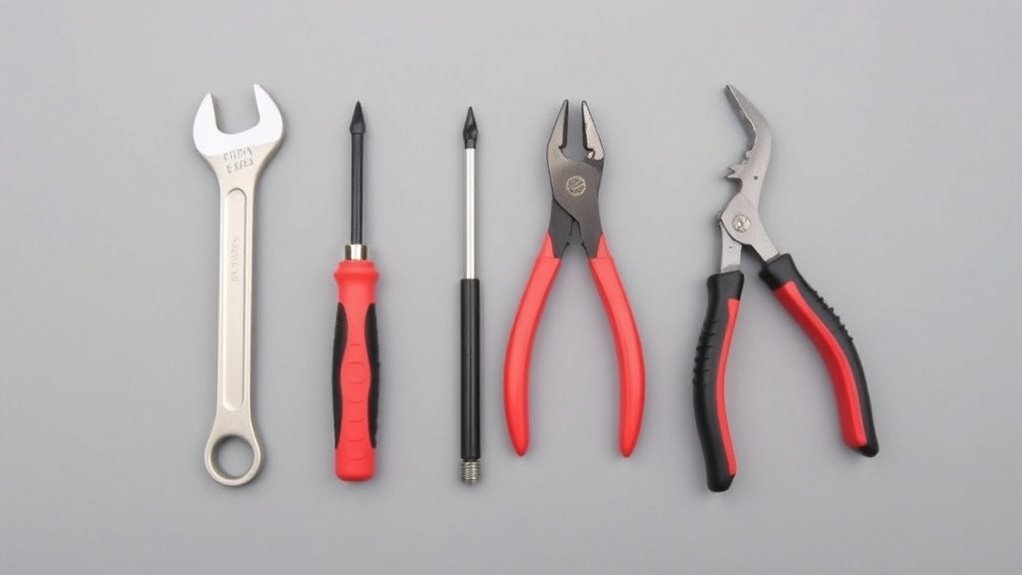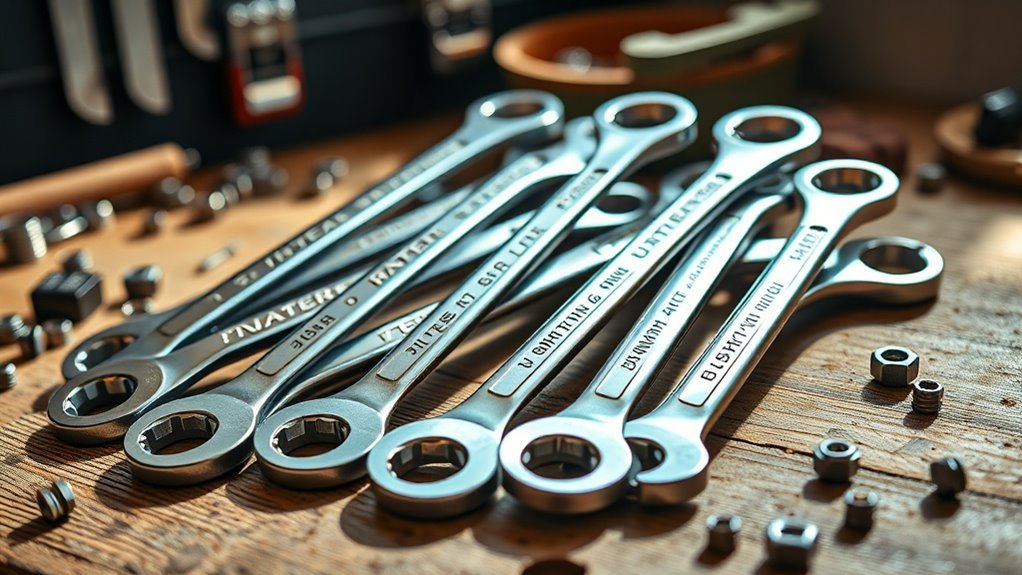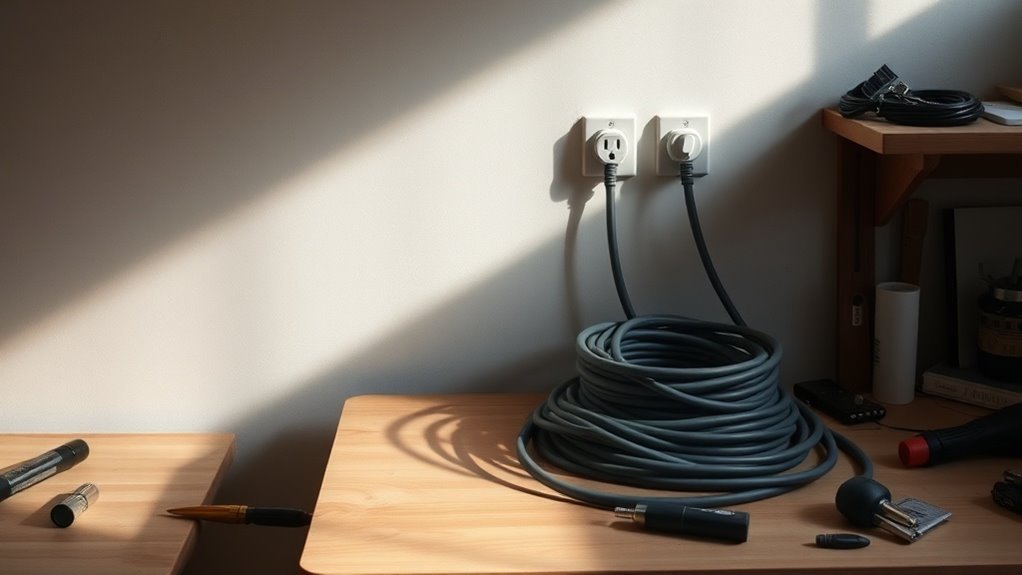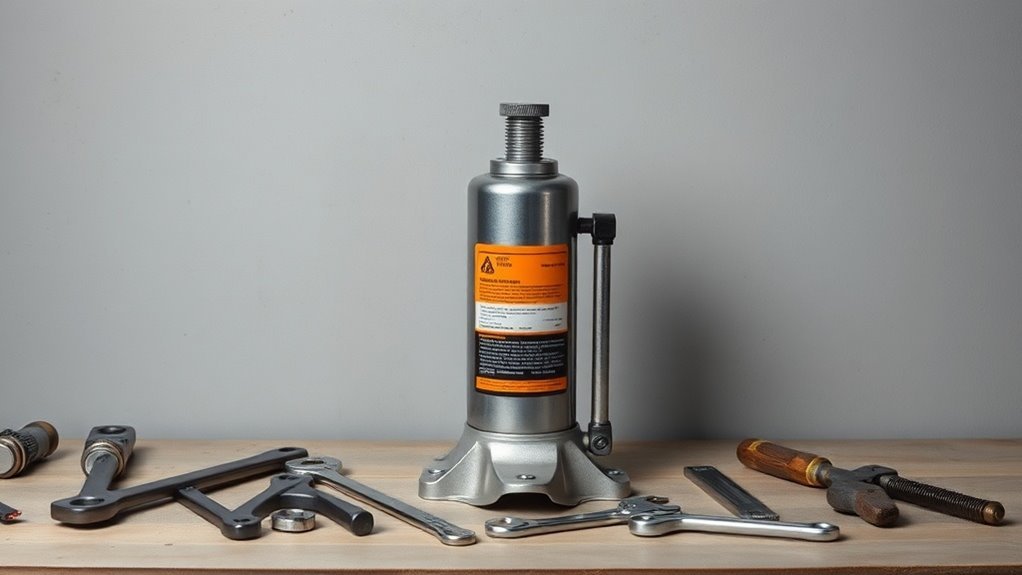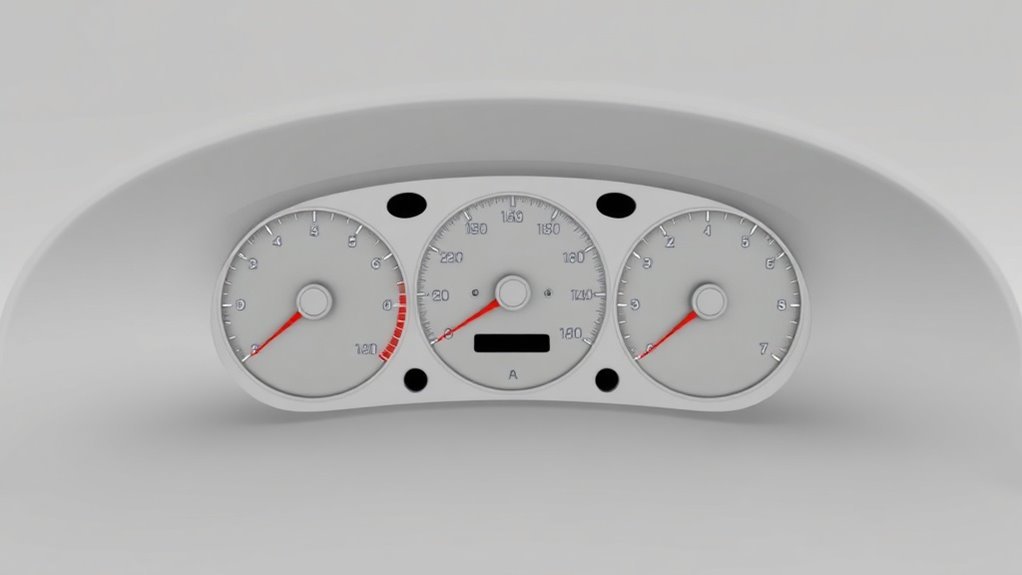Tips for Organizing Tools by Frequency of Use

To organize your tools by frequency of use, start by evaluating how often you use each tool. Categorize them by type and purpose, such as hand tools, power tools, and measuring tools. Designate storage areas based on how frequently you need them; keep daily-use tools within reach and store rarely-used items in less accessible spots. Implement an easy-access system with labels and clear containers to boost efficiency. Stick around to explore more strategies for optimizing your workspace.
Key Takeaways
- Identify and categorize tools based on usage frequency: daily, occasional, and rarely used to streamline access.
- Store daily use tools within arm’s reach, while occasional and rarely used tools should be placed further away.
- Utilize open shelving, pegboards, and labeled bins to enhance visibility and organization of frequently used tools.
- Implement regular check-ins to reassess tool distribution and adjust storage based on changing needs and patterns.
- Use drawer organizers for smaller tools and clear containers for easy visibility and accessibility during projects.
Assess Your Tool Usage and Needs
Before you can effectively organize your tools, it’s essential to assess your usage and needs.
Take a moment to reflect on how often you reach for each tool. Are there ones you use frequently, occasionally, or rarely? Make a list that outlines your most-used tools. This will help you prioritize which ones should be easily accessible.
Additionally, consider the types of projects you often tackle. If you’re frequently doing home repairs, you might need to keep your hammer and screwdriver on hand. On the flip side, specialty tools that you only use once in a while can be stored in less convenient locations. A systematic arrangement of your tools based on this assessment can significantly enhance your workflow and productivity.
Categorize Tools by Type and Purpose
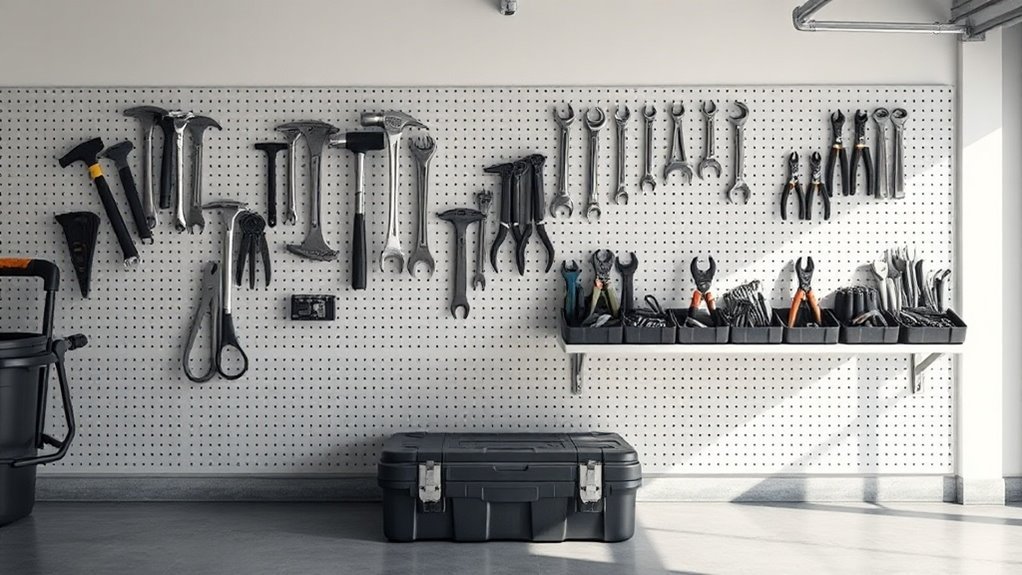
Once you’ve identified how often you use your tools, it’s time to categorize them by type and purpose. This helps streamline your workflow and makes finding what you need easier. Start grouping your tools into categories such as hand tools, power tools, and specialty tools. Next, consider the specific jobs each tool performs so you know where to reach first. Proper organization of your tools, similar to how small parts storage enhances efficiency in workshops, will also minimize time wasted in searching.
| Tool Type | Purpose |
|---|---|
| Hand Tools | Cutting, fastening, etc. |
| Power Tools | Drilling, sawing, etc. |
| Specialty Tools | Unique tasks (e.g., plumbing, electrical) |
| Measuring Tools | Precision measurements |
Designate Storage Areas Based on Frequency
To maximize efficiency, start designating storage areas for your tools based on how frequently you use them.
This approach helps you easily access what you need for any project while keeping your workspace organized.
Here’s how to do it:
1. Daily Use Tools: Keep these tools within arm’s reach, like your hammer, screwdriver, or utility knife.
Having them nearby saves valuable time.
2. Occasional Use Tools: Store these in a secondary area, like a drawer or tool chest.
This includes items like wrenches and pliers that you may not use daily but still need easy access to.
3. Rarely Used Tools: Designate a less accessible spot, such as a garage shelf or storage box, for tools that you seldom need, like specialized saws or gardening equipment.
Additionally, using proper storage containers, such as sheathes or holders, can protect both the tools and you when they are not in use.
Implement an Easy-Access System
While organization is key, implementing an easy-access system for your tools is essential to guarantee you can quickly grab what you need. Start by placing the most frequently used tools within arm’s reach.
Use open shelving or pegboards for visibility—they allow you to spot your tools at a glance. Drawer organizers can also keep smaller items orderly and accessible, while labeled bins help you find what you’re looking for without rummaging around.
Consider using clear containers so you can easily see the contents. Group similar tools together, and make sure everything has a designated spot. Furthermore, modular storage systems can be particularly effective in optimizing your tool organization by allowing for tailored solutions that fit your specific needs.
Maintain and Reevaluate Your Organization System
As you settle into your newly organized workspace, it’s essential to regularly maintain and reevaluate your organization system. Over time, your needs may change, and what worked initially mightn’t serve you as well anymore. Make it a habit to assess your setup periodically.
Regularly reevaluating your organization system ensures it continues to meet your evolving needs effectively.
- Schedule Regular Check-ins: Set aside time every few months to evaluate how effective your system is.
- Adjust Categories: If you find certain tools are used less frequently, consider reorganizing them to improve efficiency.
- Incorporate Feedback: If you work with others, gather their insights. They might’ve suggestions that enhance the overall system. Additionally, consider implementing strategic tool placement to optimize your workspace layout for better accessibility.
Questions
What Tools Should I Consider Storing Together for Efficiency?
You should consider storing frequently used tools together, like hammers and screwdrivers in one spot while keeping less-used items, such as wrenches and pliers, in another. This way, your workspace stays efficient and organized.
How Can I Keep Tools Clean and Rust-Free?
If you’ve ever discovered rust on your favorite wrench, you know how frustrating it is. To keep tools clean and rust-free, store them in a dry place and regularly wipe them down with oil.
Are There Specific Storage Solutions for Small Tools?
You can use pegboards, drawer organizers, or small bins for storing small tools. Magnetic strips work great for holding metal tools, while clear containers help you easily identify contents. Keep everything labeled for quick access!
How Often Should I Change My Tool Organization System?
You should reconsider your tool organization system whenever your needs change, like acquiring new tools or changing projects. A seasonal review can help guarantee your setup remains efficient and suits your evolving requirements effectively.
Can I Use Sustainable Materials for Tool Storage?
Yes, you can definitely use sustainable materials for tool storage! Consider options like bamboo, recycled plastics, or reclaimed wood. They’re eco-friendly and durable, ensuring your tools stay organized while also being kind to the environment.
Conclusion
By organizing your tools based on how often you use them, you’ll streamline your projects and save valuable time. For instance, if you’re a weekend gardener, keep your most-used tools like pruners and trowels in an easily accessible tote. Meanwhile, store seldom-used items like a hoe or a rototiller in a less convenient spot. Regularly reevaluating this system guarantees your organization adapts to your changing needs, keeping your workspace efficient and inviting.

